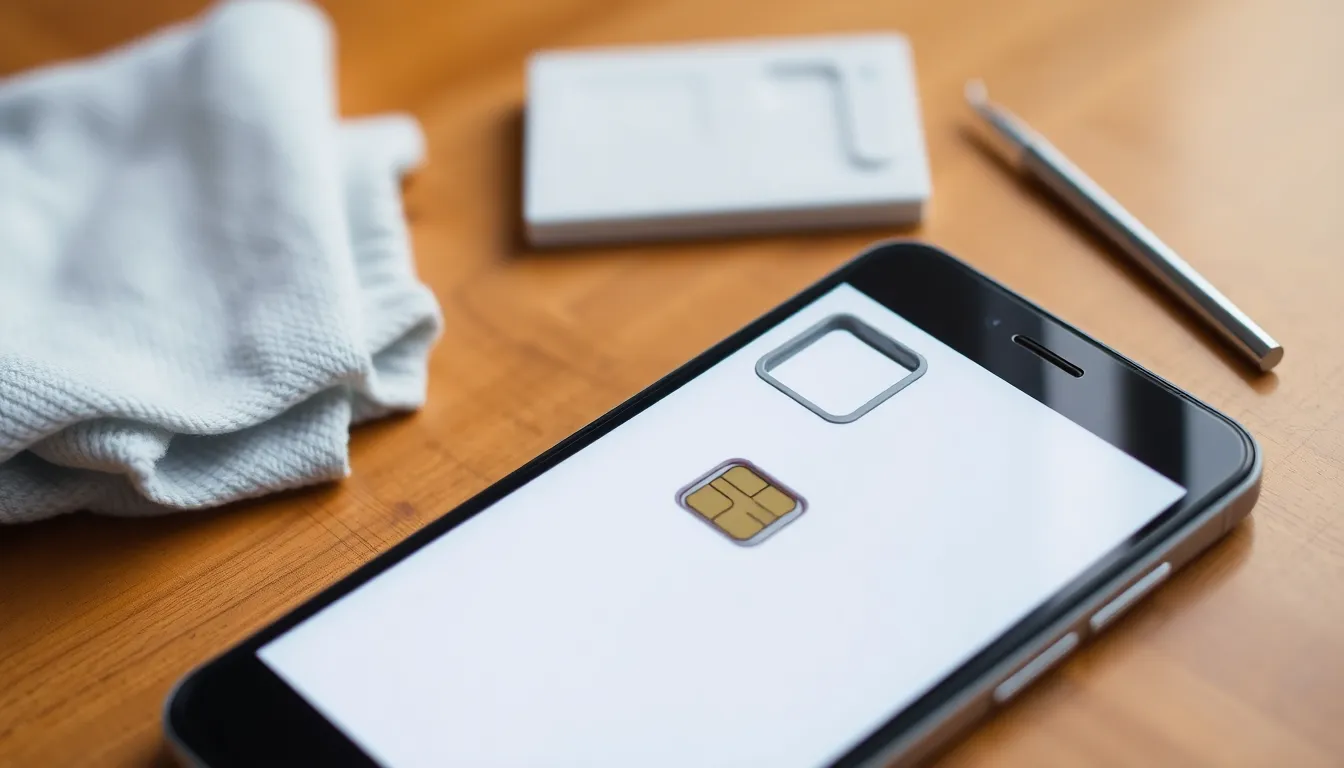Picture this: you’re all set to make that important call or send a text that could change your life, and suddenly your phone decides to play hard to get. “No SIM card detected,” it taunts. It’s like your phone’s throwing a tantrum, and you’re left wondering if it’s time to break up with it. But don’t panic just yet!
Table of Contents
ToggleCommon Reasons For “Phone Keeps Saying No SIM”
Several factors contribute to a phone displaying a “No SIM card detected” message. Understanding these reasons aids in troubleshooting the issue effectively.
Software Issues
Software glitches often lead to the “No SIM” error. Outdated operating systems can cause compatibility problems with the SIM card. Regular updates fix bugs and improve overall performance. Additionally, resetting the network settings may resolve misconfigurations that prevent the detection of the SIM card. Occasionally, a simple restart can clear temporary software hitches, allowing the device to recognize the SIM correctly.
Hardware Problems
Hardware issues can also trigger the “No SIM” warning. Improperly seated SIM cards frequently lead to detection failures. Ensuring the SIM card is securely fitted in the tray may fix the issue. Dust or debris buildup on the SIM card or slot can disrupt connections. Cleaning both gently with a soft cloth can improve contact. In more severe cases, a damaged SIM card or defective SIM tray might require replacements to restore full function.
Troubleshooting Steps

Resolving the “No SIM card detected” issue involves several straightforward troubleshooting steps. Users can often quickly restore connectivity by following these procedures.
Restart Your Phone
Restarting the phone serves as a fundamental first step. Many temporary glitches resolve themselves after a reboot. The process is quick; simply power off the device, wait a few seconds, and turn it back on. This action refreshes system processes and might eliminate the error message.
Check SIM Card Placement
Checking the SIM card placement is crucial. Removing the SIM card requires careful attention to ensure proper handling. After taking it out, users should inspect the card for damage and clean it gently with a soft cloth. When reinserting the SIM, it must fit snugly in its tray. Misalignment or loose placement can easily lead to connectivity issues.
Update Your Device
Updating the device holds significant importance for resolving software issues. Regular updates often contain bug fixes and improvements that enhance device performance. Users should navigate to the settings menu to check for available updates. A simple tap on “Software Update” may reveal pending updates, allowing the device to benefit from the latest optimizations and security patches.
When To Seek Professional Help
Certain situations demand professional assistance when encountering the “No SIM” issue. Recognizing these moments can lead to faster resolution and restored connectivity.
Contact Your Service Provider
Always reach out to the mobile service provider if problems persist. Representatives can often identify network-related issues impacting connectivity. Account status checks ensure there are no service interruptions. Specific solutions may involve resetting network settings from their end. Assistance with SIM card replacements could also be available if the current one is faulty.
Visit a Repair Center
Consider visiting a certified repair center for hardware problems. Technicians possess the expertise to diagnose and repair intricate issues that are beyond simple troubleshooting. They can conduct a thorough examination of both the SIM card and the phone’s internal components. Issues such as damaged SIM trays or faulty SIM slots might be detected. Seek this option if previous troubleshooting steps failed to resolve the problem.
Prevention Tips
To minimize the occurrence of the “No SIM card detected” issue, users can adopt a few proactive measures.
Regular Software Updates
Updating software regularly enhances overall device performance and security. Faulty software can contribute to connectivity issues, making updates vital. Users can enable automatic updates to ensure they receive the latest features and bug fixes. Checking for updates manually proves beneficial, especially if an important update was missed. Ensuring the device runs the most current operating system helps prevent errors like “No SIM.” Regular maintenance of software extends device longevity and enhances user experience.
Proper SIM Card Handling
Handling the SIM card with care prevents issues that might cause error messages. Users should ensure the SIM card is inserted correctly and seated in the tray without any obstructions. Cleaning the SIM card and slot gently with a soft cloth removes dust and debris, which can disrupt connectivity. Checking for visible damage on the SIM card can save time and frustration. If the SIM card appears warped or cracked, replacing it is often necessary. Taking these steps can significantly reduce the risk of encountering the “No SIM” message.
Experiencing a “No SIM card detected” message can be frustrating but it’s often a solvable issue. By following the troubleshooting steps outlined, users can restore their phone’s connectivity without needing to rush into a replacement. Keeping the device updated and handling the SIM card with care can prevent future occurrences.
If problems persist despite these efforts, seeking help from a professional or contacting the mobile service provider can provide additional solutions. With a little patience and attention, users can navigate this common issue and enjoy seamless communication once again.




